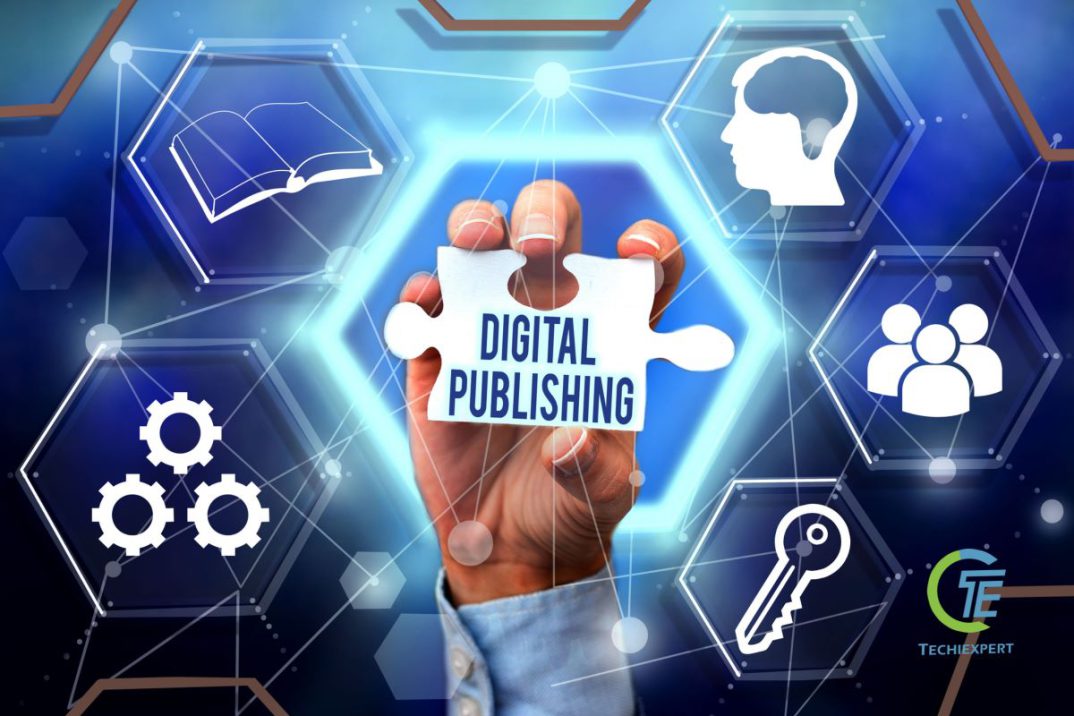The world of content creation has been transformed by publishing software, offering a range of tools and features that assist writers and marketers in producing captivating and visually appealing content. Whether it’s blog posts or e-books, digital publishing software brings a host of advantages that elevate the content creation process.
1. Simplified Design Process
Capturing readers’ attention hinges on creating engaging content. The best digital publishing software empowers designers to effortlessly integrate high-quality images, videos, and graphics to enhance the appeal of their work. These tools enhance integration, ensuring that the design complements the written text seamlessly.
2. Streamlined Workflow
Digital publishing software provides tools and version control features that streamline the content creation process for multiple teams collaborating on projects. Writers, editors, designers, and other team members can collaborate in real-time, fostering communication and boosting overall productivity.
3. Enhanced Interactive Content
Interactive content is gaining significant popularity because of its ability to engage users at a certain level. With publishing software, creators can incorporate elements like quizzes, polls, clickable images, or infographics that offer readers an immersive experience. These interactive features encourage engagement with the content while providing insights to users.
4. Customizable Templates
Content creators often find themselves facing time constraints while still requiring top-notch designs for their projects. Digital publishing tools offer excellent templates that serve as a starting point without compromising on quality or originality. These templates assist professionals in saving time by providing well-designed layouts that can be tailored to meet specific branding needs or cater to particular target audiences.
5. Consistency Across Various Platforms
In today’s era, producing content that’s compatible across multiple platforms is crucial for effectively reaching a broader audience. By leveraging the design capabilities of publishing software, creators can ensure uniformity in formatting across different devices, like desktops and smartphones, irrespective of screen sizes or operating systems used by users. This uniformity enhances user experience and enables creators to attract and retain the interest of their audience.
6. Analytics and Data Insights
Gaining insights into how readers interact with the content is vital for refining strategies. Most digital publishing tools offer analytics and data insights that empower creators to track metrics such as page views, time spent on each page, click-through rates, and more. Armed with this information, creators can make decisions based on data to consistently enhance content performance.
7. Search Engine Optimization (SEO) Features
Implementing robust SEO strategies in content ensures visibility and reach among intended audiences. Digital publishing tools often come with SEO features such as editing metadata, automatic updates for sitemaps, and customizable URLs that include keywords. This helps attract traffic to your content.
8. Cost-Effective Publishing
Using publishing software can significantly lower the expenses typically associated with print-publishing methods. By eliminating the need for printing materials and physical distribution, running a campaign becomes more cost-effective than investing in print materials and overhead costs like those involved in radio broadcasting setups.
9. Efficient Content Distribution
Digital publishing software not only aids in content creation but also simplifies the distribution process. By integrating with platforms and social networks, creators can easily share their content with a wider audience. This functionality enhances visibility and expands reach, ultimately driving more traffic to their publications.
10. Enhanced Branding Opportunities
Digital publishing tools provide creators with opportunities to establish and strengthen their brand presence. By using pre-designed templates, creators can easily infuse brand elements such as logos, colors, and fonts into their publications. Maintaining branding helps in building recognition and credibility among readers, encouraging them to engage more deeply with the content.
11. Mobile Optimized Content
In today’s digitalized world, ensuring that the content is optimized for mobile devices is paramount. Digital publishing software allows creators to design and format their content specifically for mobile screens, providing an optimal reading experience for users. With features like responsive design and mobile-friendly templates, creators can reach and engage with their audience regardless of the device they’re using.
12. Enhanced Collaboration and Feedback
Digital publishing software facilitates seamless collaboration between the team members involved in the content creation process. Through real-time editing, commenting, and feedback features, creators can work together efficiently to produce high-quality content. This streamlined collaboration ensures that all team members are on the same page and can provide valuable inputs to enhance the overall quality of the publications.
Conclusion
The advent of publishing software has transformed the landscape of content creation by offering a multitude of benefits that enhance the process. Creators are equipped with the tools necessary to create appealing content through simplified design choices, efficient workflows, and interactive elements. This software offers customization options while maintaining compatibility across various platforms to enhance user experience.





